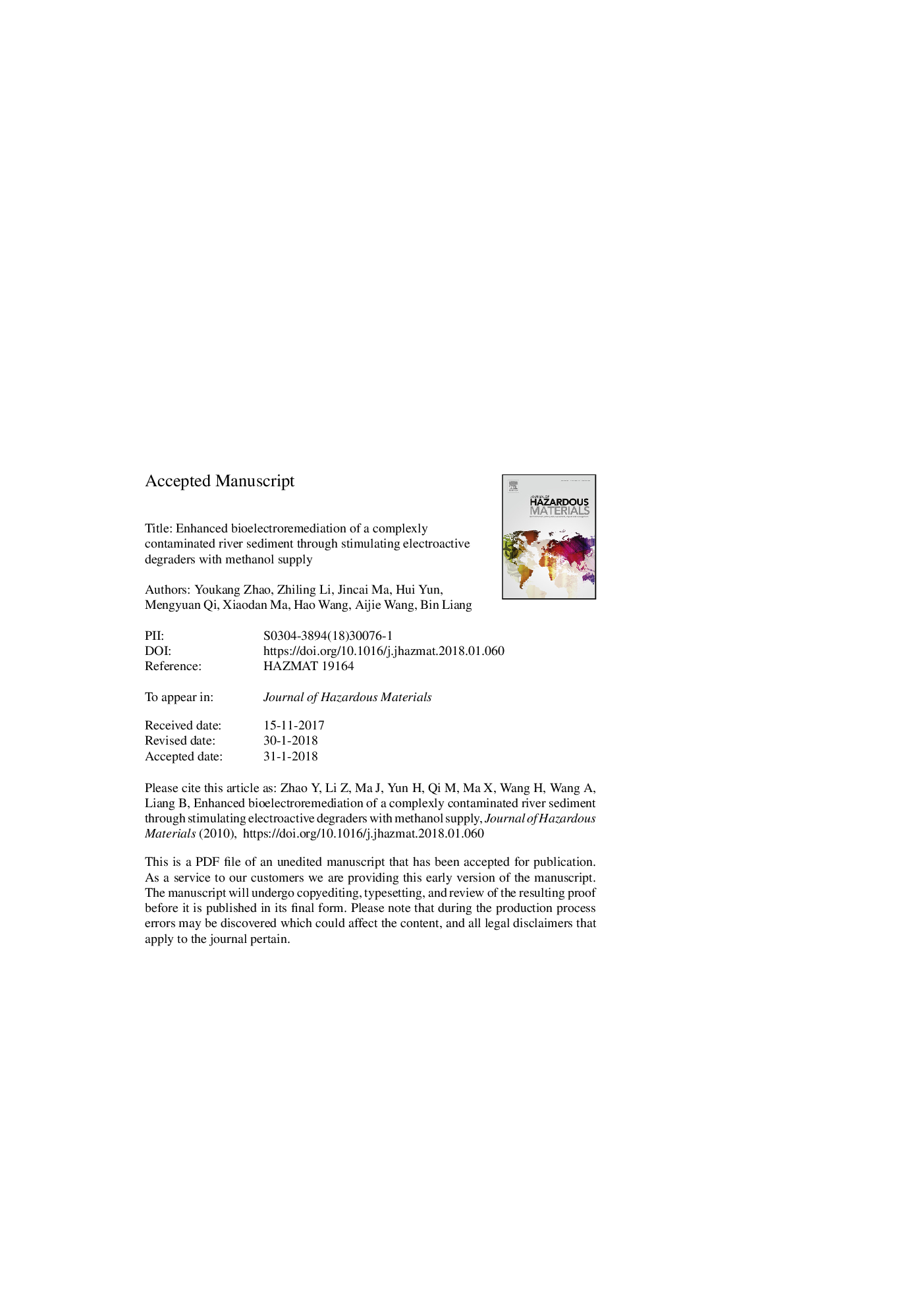| Article ID | Journal | Published Year | Pages | File Type |
|---|---|---|---|---|
| 6968867 | Journal of Hazardous Materials | 2018 | 32 Pages |
Abstract
Bioelectroremediation is an efficient, sustainable, and environment-friendly remediation technology for the complexly contaminated sediments. Although various recalcitrant pollutants could be degraded in the electrode district, the degradation efficiency was generally confined by the low total organic carbon (TOC) content in the sediment. How to enhance the electroactive degraders' activity and efficiency remain poorly understood. Here we investigated the bioeletroremediation of a complexly contaminated river sediment with low TOC in a cylindric sediment microbial fuel cell stimulated by methanol. After 200 days treatment, the degradation efficiencies of total petroleum hydrocarbons (TPH), polycyclic aromatic hydrocarbons (PAH), and cycloalkenes (CYE) in the electrode district with methanol stimulation were 1.45-4.38 times higher compared with those in the non-electrode district without methanol stimulation. The overall electrode district communities were significantly positively correlated with the variables of the enhanced TPH, PAH, CYE and TOC degradation efficiencies (pâ¯<â¯.01). The joint electrical and exogenous methanol stimulation selectively enriched electroactive degraders (Geobacter and Desulfobulbus) in the anode biofilms, and their proportion was markedly positively correlated with the characteristic and total pollutants degradation efficiencies (pâ¯<â¯.001). This study offers a new insight into the response of key electroactive degraders to the joint stimulation process.
Keywords
Related Topics
Physical Sciences and Engineering
Chemical Engineering
Chemical Health and Safety
Authors
Youkang Zhao, Zhiling Li, Jincai Ma, Hui Yun, Mengyuan Qi, Xiaodan Ma, Hao Wang, Aijie Wang, Bin Liang,
